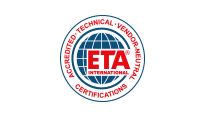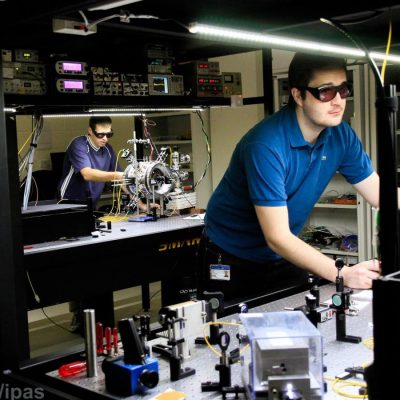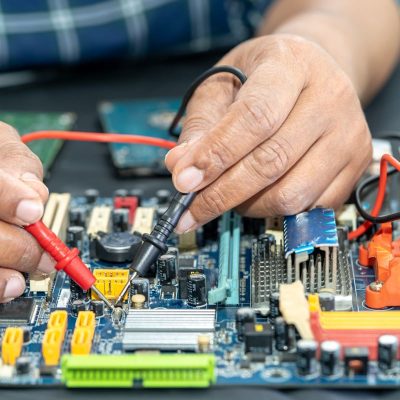Description
Data Cabling Installer (DCI)
ETA Data Cabling Installers are expected to know the basic concepts of copper cabling installation and service—which are then applicable to all the procedures required to safely and competently install communications cabling. Basic electricity and safety; data communications basics; definitions, symbols and abbreviations; cable construction and types; cable performance characteristics; cabling standards; basic network topologies; basic network architectures; National Electrical Code (NEC®); cabling system components; DCIC installation tools; connectors and outlets; cabling system design; cabling installation; connector installation; cabling testing and certification; cabling troubleshooting; documentation.
Fiber Optics/Copper Integration Technician-Outside Plant (FCI-OSP)
This certification is designed for technicians working in the Outside Plant field studying the “physical layer” of the OSI model. Individuals are expected to obtain knowledge in order to prepare for the ETA® International FCI-OSP certification examination. This includes a full understanding of fiber-to-the-home (FTTH) from the fiber optic terminal to router, of skillfully performing splices and closures, drops, identification and integration of the fibers with the copper portions of the network. This entails working with varied pieces of network equipment and measurement testing, such as Network Interface Devices (NID), an Optical Network Terminal (ONT), of Optical meter and fiber fusion splicer use, reading blueprints and data sheets. A knowledge of the concepts of simple fiber optics troubleshooting and service applicable to all of the functions is required to safely and completely analyze FTTx signatures, measure reflectance, test splitters, and identify faults in fiber optics communications and transmission cabling.
The technician must have successfully completed an ETA Approved training organization Fiber Optic Copper Integration-Outside Plant FTTH training course by proving Hands-On Skills before attempting the written knowledge exam. Successful completion of both H-O skills and written knowledge will earn the FCI-OSP certification.
Fiber Optics Installer (FOI)
This certification is designed for technicians working in the Outside Plant field studying the “physical layer” of the OSI model. Individuals are expected to obtain knowledge in order to prepare for the ETA® International FCI-OSP certification examination. This includes a full understanding of fiber-to-the-home (FTTH) from the fiber optic terminal to router, of skillfully performing splices and closures, drops, identification and integration of the fibers with the copper portions of the network. This entails working with varied pieces of network equipment and measurement testing, such as Network Interface Devices (NID), an Optical Network Terminal (ONT), of Optical meter and fiber fusion splicer use, reading blueprints and data sheets. A knowledge of the concepts of simple fiber optics troubleshooting and service applicable to all of the functions is required to safely and completely analyze FTTx signatures, measure reflectance, test splitters, and identify faults in fiber optics communications and transmission cabling.
The technician must have successfully completed an ETA Approved training organization Fiber Optic Copper Integration-Outside Plant FTTH training course by proving Hands-On Skills before attempting the written knowledge exam. Successful completion of both H-O skills and written knowledge will earn the FCI-OSP certification.
Fiber Optics Technician (FOT)
A Fiber Optics Technician has a full understanding of inside plant optical fiber, connector, and splice performance characteristics as described in TIA-568 and can use these performance characteristics to create a worst case power budget for a fiber optic cable plant. An FOT can proficiently troubleshoot, perform optical loss testing as described in TIA/EIA-526-14A and perform connector endface evaluation as described in TIA-455. Using an OTDR an FOT can effectively locate faults in a fiber optic cable, mated connector pair, or splice as well as evaluate optical fiber performance, mated connector pair performance, or splice performance for compliance with TIA-568.
Fiber Optics Technician-Inside Plant (FOT-ISP)
A Fiber Optics Technician – Inside Plant must be able to accurately install, terminate, test, and troubleshoot fiber optic communication systems used in premises, LANs, enterprise and data center installations. Included are various techniques applicable to gigabit multimode and single-mode systems consisting of unique test requirements in Ethernet and by Fibre Channel, but also pertinent to FTTx, security systems, and CATV networks. As many inside plant installations use multimode fiber, the FOT-ISP technician must recognize the various types – IEC defined OM2, 3, 4 & 5 multimode – and OS2 single-mode fibers along with the various proper launch conditions used when testing fiber spans as also defined by the TIA-568 and TIA-942 standards. Technicians must similarly comprehend various fiber optic cable connector types and termination used in these networks, using best practices for installing and testing fiber links. The FOT-ISP should have a basic understanding of the National Electrical Code (NEC®) and all safety conditions specific to the inside plant and campus applications.
Fiber Optics Technician-Outside Plant (FOT-OSP)
A Fiber Optics Technician – Outside Plant must be able to properly terminate, test and troubleshoot single-mode fiber optic communication systems. This includes various types of termination techniques applicable to high speed laser based systems including SONET, DWDM, FTTx, CATV networks using ITU-T G.652 and G.655 single-mode fibers. Disciplines include mechanical and fusion splicing per the TIA-758, GR-765 and GR-20 standards, and the preparation of fiber optical cables and cable management products. Testing and troubleshooting roles of each element and span of the fiber optic communication system(s) include optical loss testing of transmission equipment per the TIA-526-7 standard along with an understanding of OTDR theory and skills required including acceptance testing.
The FOT-OSP understands optical loss budgets, not to exceed loss budgets and has the knowledge and skills required for troubleshooting single-mode OSP fiber optic communications systems addressing the roles of attenuation, dispersion and refection and how to identify and troubleshoot each. The FOT-OSP should have a basic understanding of the National Electrical Safety Code (NESC®), National Electrical Code (NEC®), and all safety conditions specific to the outside plant environment and the applicable transmission equipment.
Fiber To Any Antenna (FTAA)
The Fiber To Any Antenna standalone certification is for individuals who have been trained in the practice of installing fiber optic cabling at wireless and cellular facilities. These disciplines are applicable to all the functions required to safely and competently install pre-terminated fiber optic transmission cable assemblies and connection devices onto equipment and antenna(s), wherever the antenna system may be located. Included are how to inspect, clean and test the fiber plant along with how to identify and troubleshoot problems during and after installation.
Fiber Optics Designer (FOD)
The ETA 40—hour certified Fiber Optics Designer training program is an optical designer certification that will provide an indepth knowledge of optical local area networks. This certification covers all aspects of a successful fiber optic system design from network protocols, network configurations, optical cabling, industry communications standards, determination of fiber count, hardware selection, splicing/termination methods, and cable system testing and documentation. All that is learned in class is put into practice through multiple and intensive case studies. The ETA certified Fiber Optics Designer program provides detailed instruction and practice of Local Area Network fiber optic design.
Termination and Testing Technician (TTT)
This certification is directed towards the education to properly, terminate, connect, test and troubleshoot IP-enabled voice/data/video cable and devices to each other. One of the key advantages to using Cat 5e/6/6A and fiber optic cables and connectors for electronic security and voice/video/data installations is that these cable connections can be readily built using the proper tools and techniques, which will be taught in the required course. This part of the training will emphasize the ETA challenge of being vendor-neutral and applying industry standards for terminations and cable performance. The knowledge gained by the examinees will be applicable to any vendor’s products within the scope of the technology studied.
One of the primary principles of the network cabling standards is that if a cable is properly terminated and tests satisfactory, that cable can be used to connect any proper device from any manufacturer. There are hundreds of vendors making thousands of different IP network devices, any and all of which can be readily connected to a network if the cable to be used is properly terminated and tested.








